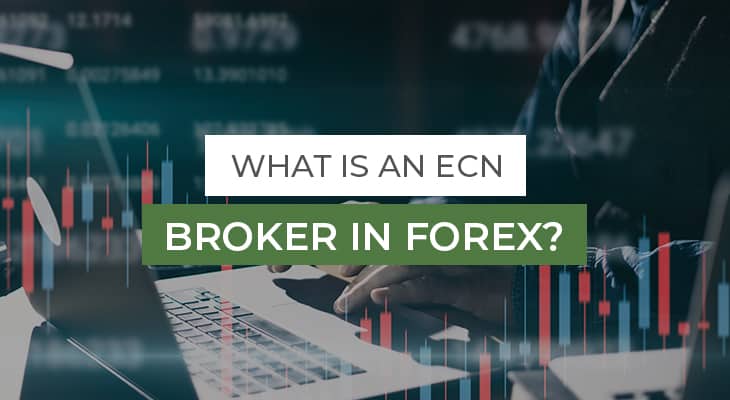Content
When someone successfully mines a block, they receive a reward in bitcoin. Every 10 minutes new bitcoins enter circulation as a result of a block being solved. Through a process known as mining, powerful computers attempt computational problems. When these problems are solved, blocks full of transactions get added to the bitcoin blockchain.
Bitcoin’s code also means that rewards to miners will continue to halve every 210,000 blocks until they reach zero, limiting the total number of Bitcoins that will ever exist to 21 million. On average, massive computers using special software and working around the clock all over the world manage to create less than 150 new blockchains a day. ‘Half’ is not really a popular term in the world of investment because it conjures up fears of investments losing half their value.
As of today, over 17 million bitcoins have been mined out of the maximum 21,000,000. Once 21 million bitcoins have been mined, no new bitcoins will ever be created. In the coming weeks, the number of new bitcoins being mined each day will halve. To understand why the halvening is so important, you first need to understand how bitcoins enter circulation. This area of the ADVFN.com site is for independent financial commentary. These blogs are provided by independent authors via a common carrier platform and do not represent the opinions of ADVFN Plc. The information available at ADVFN.com is for your general information and use and is not intended to address your particular requirements.
Bitcoin ‘halving’: What Does The Much
This indicates that Bitcoin could be a good way to hedge against economic and political risk. This month, the number of new bitcoins being mined each day will halve. Here we look at the history of the halvening and how it could affect the price of bitcoin in the future. The reason for Bitcoin price increases is the principle of supply and demand.
Entirely digital, and with no central authority in charge, it relies on consensus between everyone on the network to keep it running. Other analysts remain cautious about how much of an impact the halving event will actually have on the cryptocurrency market.
Bitcoin Just Went Through A Massive Change Known As halving
The purchase of real/cryptoassets is an unregulated service and is not covered by any specific European or UK regulatory framework . Bitcoin is a finite asset that takes time and energy to produce. 101 Ways to Pick Stock Market Winners You need the number one bestselling investment guide, the definitive text for day traders, investors and stock pickers.
The price inflates even further if demand is increasing at the same time. Every halvening the supply of new coins entering the market is drastically reduced. Historically, this has led to the price of bitcoin increasing. We are now approaching the third halvening, where the bitcoin block reward will reduce from 12.5 bitcoins to 6.25 bitcoins. When bitcoin was first created, a miner would receive 50 bitcoins for every block. With few bitcoins in circulation at this early stage, bitcoin’s supply began to rise sharply.
Bitcoin Has Just halved Again
The underlying Bitcoin’s blockchain software dictates the rate of Bitcoin creation. This software compels computers in its network to compete in verifying transactions via a mining process. The system rewards miners with a specific number of new coins for valid transactions. Blocks are the groups in which transactions’ verification occurs. The Bitcoin network’s coding requires it to halve the miners’ reward every 210,000 blocks. The next halving of this cryptocurrency is likely to happen around 2024. The bitcoin halving is unlikely to impact on this,” says Sushil Kuner, principal associate, Gowling WLG.
The cryptocurrency can be used to buy products and services, in in 2018 a company in Northern Ireland started to accept Bitcoin as a way of payment to buy a house. Bitcoin is an entirely digital currency (Photo by Omar Marques / SOPA Images/Sipa USA)Bitcoin was first released in 2009 and its value has fluctuated over the last ten years, reaching its peak in December 2017. You should seek advice from an independent and suitably licensed financial advisor and ensure that you have the risk appetite, relevant experience and knowledge before you decide to trade. eToro AUS Capital Pty Ltd. is authorised by the Australian Securities and Investments Commission to provide financial services under Australian Financial Services License .
But that story has been baked into this halving for many months. This process will continue every four years until some time around 2140, when the 21-millionth coin is mined. So, the dynamic is that people are acting out of their own self-interest , but the result of that self-interest is that the system is maintained. Bitcoin’s creator, Satoshi Nakamoto, resented the iniquities of a fiat money system, in which certain favoured bodies have the ability to create money at no cost. “Escape the arbitrary inflation risk of centrally managed currencies,” he later declared.
- The value of Bitcoin fluctuates all the time in a similar way to more conventional currencies.
- But I do suggest it has the potential to become the default cash system of the internet.
- “Some estimates have the price of bitcoin doubling, or increasing by even more with estimates of up to $50,000.
- The Bitcoin block halving and the reward halving will decrease following the May Bitcoin halving.
Different from July 2016, when users were anticipating the event. The prices started going up almost a month before the halving. Once the rate of mining is low with the same demand, the value goes up. It is a sure way to manage inflation within the Bitcoin ecosystem. Bitcoin halving is one of the most anticipated crypto events.
Some have argued that this halving of sell pressure contributed to the rise in bitcoin price in the months after the halving event in 2016 and 2017. Bitcoin is set to reduce its block reward by half around May 12th and Google searches for “Bitcoin halving” are skyrocketing. The chart below shows searches for the term over the last 5 years against the Bitcoin price. We can see how recent searches substantially eclipse the search volumes for the last halving in July 2016, pointing to increased investor interest in the event.
When a halving occurs, the Bitcoin block rewards received by miners for validating transactions are reduced by 50%. After the 2016 halving event, the blockchain went from mining 3600 bitcoin down to 1800 bitcoin daily. The halving of the mining reward means that if the reward currently stands at 12.5 bitcoin per block, after the halving it will be reduced to 6.25 bitcoin. The block reward for mining new bitcoin is halved, meaning that miners will receive 50 per cent less bitcoin for every transaction they verify. Because bitcoin has a finite amount and its supply is reduced over time, the price can be kept stable by reducing the overall supply.
“The halving itself doesn’t help mainstream adoption, but it will get attention and headlines and help bring in the next wave of people who end up being long term holders,” says Bitcoin Lessons’s Stephens. While the general consensus for the long-term prospects of bitcoin is an upward trajectory, experts are divided about how much the halving will shape this. However, others do not see such growing government interest in bitcoin as being impacted by the halving. “The impending recession could really highlight on a global scale the problems with governments owning money, and whilst a depression would likely suppress the price of all assets for a number of years,” he says.
The May 2020 event will see the number of BTC mined go down to 6.25 every 10 minutes. Crypto enthusiasts are split on whether the halving, the third in bitcoin’s history, will lead to a boom in the price as fewer coins enter digital circulation.
And although the increased name recognition of and demand for bitcoin likely complicates a like-for-like comparison, Scott is still confident we are set for another bull run on the back of this latest halving. Investors who took a punt on bitcoin when it collapsed in price along with other assets in the big coronavirus-fuelled market crash in late February and March have already cashed in. During a bull run people who feel like they have missed the Bitcoin boat often buy alt-coins as they see they are priced much lower than Bitcoin (they don’t tend to look at other factors though). This was the first time the currency garnered world wide media attention and saw people who overlooked the currency previously to start investing. This helped to bring the currency into the modern day world where you could use it to buy items in shops as mentioned in the previous article.
Bitcoin halvening is when the block reward decreases by half. The introduction of these new bitcoins causes inflation, as more units become available to be sold or traded.
The Bitcoin Halving Is Just Hours Away: Data And Analysis From Cryptocompare
There is also the risk that Bitcoin could suffer a big crash if the miners sell off their rewards because of the sudden doubled cost they’ll incur to mine. 76.4% of retail investor accounts lose money when trading CFDs with this provider. You should consider whether you understand how CFDs work and whether you can afford to take the high risk of losing your money. ‘But in a fundamental sense, it doesn’t have as big an impact as many people seem to believe. But some are less convinced the halving will lead to a bitcoin bull run. He added the exchange, which allows people to buy bitcoin and other cryptocurrencies, had seen an increase in customers every month of this year. However, those were both far lower than bitcoin’s ultimate high of more than $20,000 reached two years’ ago, at the height of bitcoin’s boom.
Who owns the most bitcoin?
At the top of the list is Satoshi Nakamoto, the founder of Bitcoin, who is rumoured to own around 1 million Bitcoins – although no one knows who he really is.
That can be 10%, 5% or less depending on your trading strategy. However, traders must keep in mind that there may be some negative after-effects of the Bitcoin Halving. Some analysts have predicted that other altcoins may suffer as a result of the Halving; after Bitcoin’s bull run in 2019 a lot of the smaller altcoins suffered when their investors turned to Bitcoin.
Peters believes this combination of diminished supply and increased demand could see the price of Bitcoin comfortably exceed its all-time-high of December 2017 and reach between $20,000 and $50,000. This could see more institutional investment enter the space, as professional investors seek exposure to alternative assets.
With Covid-19 money printing at full throttle, the case for bitcoin has got even stronger. Today, we consider bitcoin in the wake of this week’s halving – and don’t worry, I’ll explain what that means in a moment. As well as being traded, Bitcoins can be generated (known as ‘mining’) through using computational power to solve complex mathematical puzzles. When a halving occurs, it means the rewards for mining are split. There have only been two previous ‘halving’ events in Bitcoin’s history.
This may not necessarily involve buying bitcoin itself, but rather buying shares in trust companies that do. “In the last halving, we weren’t in a health or financial crisis and we didn’t have central banks creating ludicrous amounts of new money,” Peters says. The unprecedented levels of financial stimulus being injected into economies by central banks may see an increased demand for bitcoin and other cryptocurrencies as a hedge against inflation. Previous halvings have been followed by bull runs that saw the meteoric increases in bitcoin’s value, most notably in 2017, following the reward decreasing from 25 coins to 12.5 in 2016. Halving refers to the number of coins that miners receive for adding new transactions to the blockchain being cut in half. The digital currency has gained more than 20% since the start of this year, touching $10,000 last week. That came after a report that hedge fund manager Paul Tudor Jones has backed the cryptocurrency as a safeguard against inflation.









